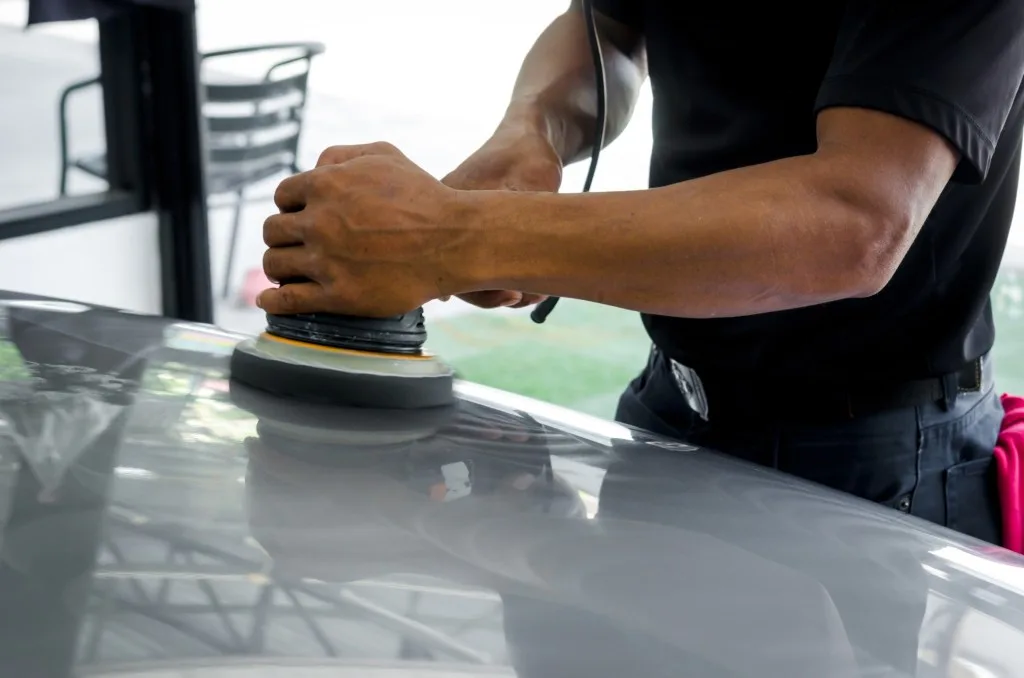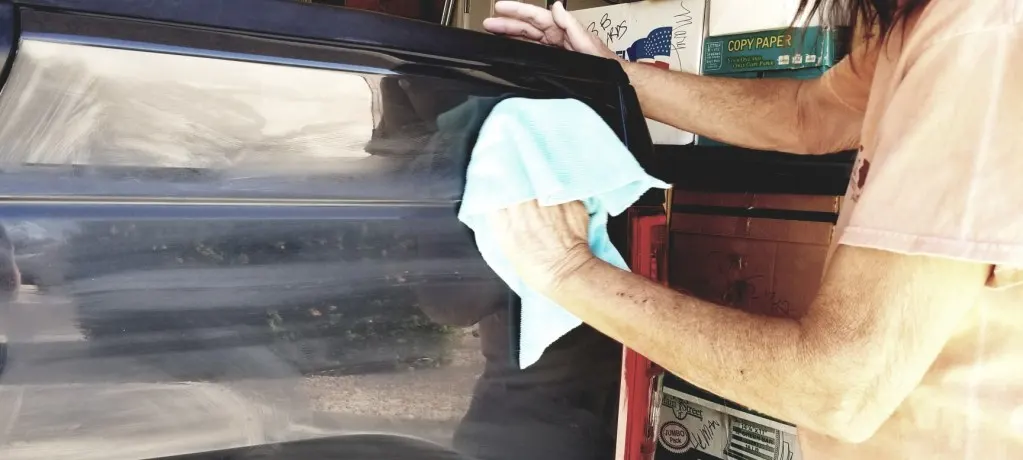How to Remove Oxidation From Your RV
Oxidation is a common issue with older RVs that causes discoloration and clouding on your rig’s exterior.
The good news is that you can remove RV oxidation at home, DIY style. The not-so-good news is that it’s a big job.
Here’s how to remove oxidation from your RV — and how to prevent it from happening again.
Let’s dig in!
What Causes RV Oxidation?
Most RV exteriors are made from fiberglass with a gel coating. RV oxidation occurs over time as the gel coat reacts with the oxygen in the air. Oxidation causes your RV to look dull, cloudy, chalky, and old. But there’s good news: you can fix it.

How to Remove Oxidation from Your Fiberglass RV
There are a few techniques for removing oxidation from your RV. The level of oxidation will determine which approach you should use. For the most part, removing oxidation from your RV gel coat just requires some oxidation remover polish and some (or a lot of) elbow grease.
1. Clean Your Surface
First things first: Clean the surface of your RV. Be sure the surface is free of dirt, lichen, and sap from trees. Once your surface is clean and prepped, you can get to work on removing the oxidation.
2. Use a Liquid Oxidation Remover
Removing oxidation requires buffing and polishing. To make this job easier, you can use a liquid oxidation remover. Gel coat restoration kits contain an oxidation remover, polish, and wax.
These are all the products you need to do the entire job. You can use a non-scratching sponge or a power buffer to save yourself some work.
2. Polish Your RV
After you remove the oxidation, it’s time to polish your RV. Using a non-scratching sponge or buffer, apply the polish and work it into the surface of your RV. Allow the polish to dry, and then wipe it off with a clean, dry cloth.
3. Wax On, Wax Off
Finally, once you’ve removed the oxidation and polished the surface, it’s time to protect it. Wax your RV a few times a year. This helps prevent oxidation and the gel coat for years to come.
Pro Tip: It’s usually cheaper to purchase a kit, such as Meguiar’s M4965 Marine/RV Fiberglass Restoration System.

What Tools Do You Need to Remove RV Oxidation?
Depending on the severity of the oxidation and the size of your RV, you’ll need different tools. To apply the oxidation removing compound and polish, you’ll either need a rag or a rotary buffer. We recommend using a power buffer to save your hands and arms. You’ll also need liquid oxidation remover, polish, and wax such as from the kit we mentioned above.
For very heavy oxidation, you may need more than just a liquid oxidation remover. You may opt to use an abrasive compound or wet sand to work through the oxidized gel coat on your RV. Finally, you’ll need plenty of dry cloths for polishing and waxing your RV.
Do All RVs Experience Oxidation?
All RVs can experience damage from the sun and the elements, but oxidation is most common on vehicles with gel coats. Most RV exteriors are made from fiberglass coated with a thin clear gel coat. The oxidation occurs in the gel coat, not the fiberglass itself.
Keep in Mind: Maintaining your RV is essential to extending its longevity. Apart from removing and preventing oxidation, here are some other areas to maintain that break first on your RV.
How to Prevent RV Oxidation
The best way to get rid of RV oxidation is to prevent it in the first place. Oxidation occurs when the RV isn’t properly cleaned or maintained for long periods. Here’s how to avoid it.

Keep Your RV out of the Sun
RVs are for exploring, and that means they’re going to be in the sun. But if your RV is in storage, keep it out of the elements to help prevent oxidation. This can mean purchasing an RV cover, parking in an RV garage or carport, or renting an enclosed storage unit.
Wash and Wax Your RV
Aside from keeping your RV covered, washing and waxing your RV are the best ways to prevent RV oxidation. You can wash your RV as often as once a month, and you should wax it at least twice a year.
Wax helps keep your RV clean and shiny and protects the gel coat, but it doesn’t last forever. Rain, UV rays, and washing your RV all break down the wax.

What Kind of Buffer Should You Use on a Fiberglass RV?
You can choose to buff your RV by hand or with an electric buffer. Electric buffers make the job a lot easier, but use them with care so you don’t burn the gel coat. If using an electric buffer, start at the lowest speed. Check for effectiveness before opting for higher speeds.
Removing Oxidation Can Be a Big Job
Removing oxidation is fairly simple, but it can be a big job. It can take several days, depending on how long you have to work and how big your RV is. Enlist help and use a powered buffer to make the job easier — and don’t forget to keep up with preventative maintenance to keep your RV oxidation-free.
Have you ever had to remove oxidation before? What worked best for you?
We’ll Help You Find the Best Free Camping in the USA
You should give it a try!
As a matter of fact, these free campsites are yours to enjoy. Every time you pay federal taxes, you’re contributing to these lands.
Become a FREE CAMPING INSIDER and join the 100,000 campers who love to score the best site!
We’ll send you the 50 Best Free Campsites in the USA (one per state). Access the list by submitting your email below:
[…] decals will cause oxidation in your RV. The older it is, the harder it is to remove. You can go for an oxidation remover and treat it. And […]
[…] Wash and wax regularly: Regular washing and waxing can help slow down the oxidation process and protect the surface of the RV from damage35. Waxing should be done at least twice a year, and washing can be done as often as once a month4. […]